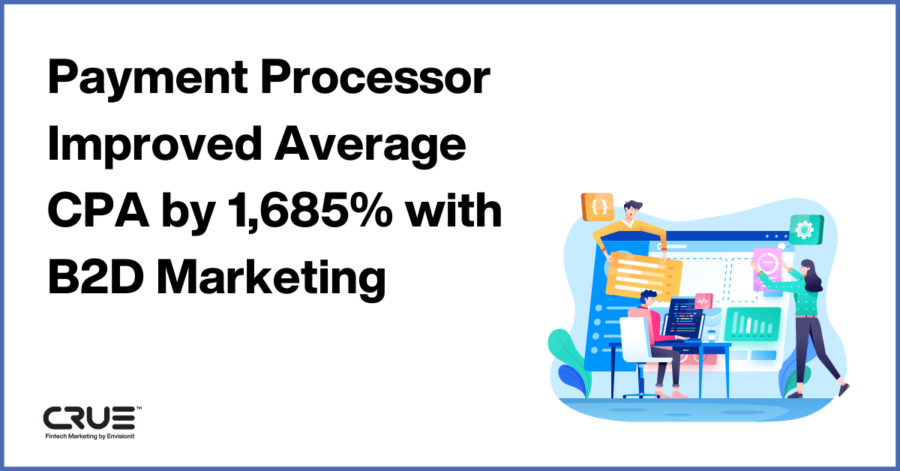Recently, I was asked by a client to identify trends around new vs. returning website visitors, an angle of analysis not usually part of our usual scope. Intrigued by what we could potentially glean from this data, I started investigating to uncover the value of understanding these particular trends around site visitors.
So what did I find when digging into new vs. returning visitors?
1) 19.5% of visitors to their website were returning, and 80.5% were new.
2) Despite a 22% decrease in overall traffic, this proportion had stayed the same, month over month.
On the surface, there’s not a whole lot going on here. While this data alone provided an okay assessment of website performance, it certainly didn’t provide any business value. At least not yet. Unsure of how to proceed, I ran the metrics through the lens of Avinash’s digital marketing model, which always helps to give me perspective. Working my way through the model, I went one level deeper and considered the visitor type metrics in terms of the KPIs that we had established with the client, and asked myself how I could connect the user type with bottom-line value.
To do this, I created a segment for converting users, based on the on-site conversions that we have established are important for this client, and applied it to the visitor type report in Google Analytics. By viewing the data this way, I found a couple of initial insights:
1) 56% of converting users are returning visitors, while only 44% of converting users are new visitors.
2) Returning visitors were converting at a rate of 2.52%, while new visitors converted at a rate of 1.94%.
Combined with the original data mentioned above, these new insights started to generate some thought. In the voice of Serial host Sarah Koenig, I asked myself, “What is making the returning visitors convert at a higher rate?” and “Why are only 19.5% of the total sessions attributed to returning users, when they contribute 56% of the conversions?” Finally, I asked: “What differentiates returning visitors from new visitors and how can we use this information to attract more of them?”
At this point, the analysis could have been taken in a number of different ways, but I decided to focus on channels, since we are a digital marketing agency, and the investment in different channels are under our control and expertise. I pulled an acquisition report and segmented by new and returning users to see if anything stood out.
Here’s what I found:
Paid Search
While organic and direct traffic were driving almost the exact same proportion of new versus returning visitors, I saw an anomaly in paid search, which made up 12% of the returning visitors pool versus 8% of new visitors. In other words, returning visitors were arriving via paid search 12% of the time, compared to new visitors who only arrived via paid search 8% of the time. 4% may not seem like a very large gap, but it was certainly big enough to explore and experiment with.
Recommendation: Given that paid search is driving a larger percentage of new visitors than returning visitors, a population that is converting at a higher rate, but not visiting the site as often as we’d like, we should invest in remarketing—a type of paid search campaign that will bring users back to the site and likely lead to more conversions.
Organic Search
Although organic search drives returning visitors in the same proportion as new visitors, it clearly drives the majority of returning visitors (61%). This shows the impact this channel has on driving bottom line results, putting it in a whole new light.
Recommendation: Given that organic search drives the majority of returning visitors, look into additional areas of opportunity for SEO. Further investigation into pages with high goal value would also help to target SEO efforts. SEO through link-building would provide an added bonus of generating more referral traffic that would potentially lead to conversions as well.
Social & Email
This is kind of a trick question, because we don’t even see social and email as sources on the above screenshot. Simply from being the analyst for this client, I know that they receive very small amounts of this traffic in each of these areas, and it’s something we’ve been working with them to address. This is where competitive intelligence can come in handy as well, as I know from benchmark reporting that competitors are investing much greater sums in these two areas. That leads me to believe that we are missing out on a good opportunity.
Recommendation: Allocate more time and budget to social and email campaigns for a specified period of time, and at that point reevaluate the value that these channels have contributed. Never forget the invisible data: what is conspicuously absent can sometimes be more valuable, and more actionable, than what is apparent.
Conclusion
Backed by numbers and business justification, I made a case to the client that they should invest more in remarketing if they want to increase conversions. I also planted a seed about SEO, social and email that will be helpful in future conversations. From a small ask, and one that I initially questioned the value of, I was able to deliver some solid recommendations and make a reasoned case for shifting focus to ultimately put more dollars in the client’s pocket.

















